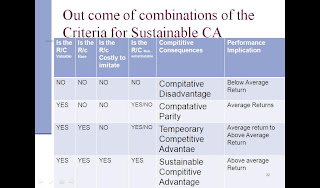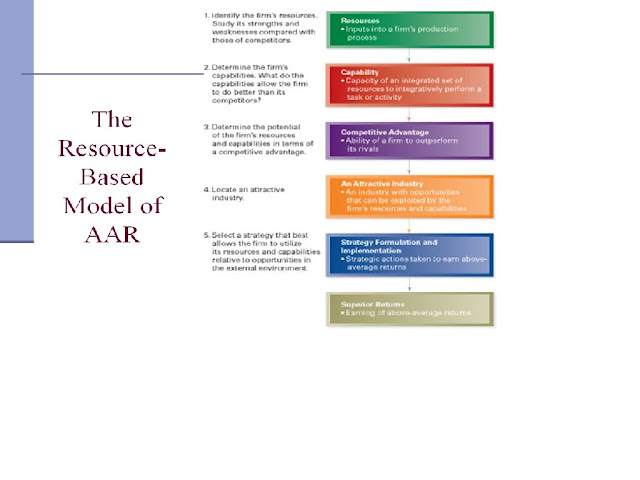Strategic Management:
Understanding : Driving Forces,Strategic Group Mapping &Key Success Factors
Factors driving Industry Change …
- Identifying what the driving forces are
- Assessing whether the drivers of change are, on the whole, acting to make the industry more or less attractive
- Determining what strategy changes are needed to prepare for the impact of the driving forces
Identifying an Industry’s Driving Forces:
1) Emerging new internet Capabilities and Applications
Got into every days biz operation and social fabric of life all across the world.Increasing internet usage & Speed->Growing internet shopping
Companies using online technology
Collaborate closely with suppliers and streamline their supply chain
Revamp internal operations and squeeze our cost saving
Manufacturer-> website-> Direct customers.
All Biz->Extend Geographical Reach
Low cost increases the no. of online rival and hence the compitition of online v/s brick and mortar sellers.
Internet gives customer-> Power to research the product offering and shop the market for the best Value.
untig Ability of Consumer to download Music from internet has reshaped traditional music retailers
- Emails has eroded fax services and first class mail delivery revenues of govt postal services world wide
- Videoconferencing has eroded the demand of biz travels
- Online cources offering have the potential of revolutionise higher education
2) Increasing Globalisation:
Industry members begin seeking out customers in foreign market
Production activities begin to migrate to countries where costs are lowest
Global competition really starts when one or more ambitious Companies precipitate a race for world wide market leadership.
- Blossoming of customer and demand in more and more countries
- Action of govt to reduce the trade barrier .Europe,Latin America and Asia
- Significant difference in labour cost ->locate plant e.g China, india , Singapore, Maxico and Brazil ¼ of those in US, Germany and Japan
3) Changes in an Industry Long Term Growth Rate.
4) Changes in who buys the Product and how they use it:
5) Product Innovation:
6) Technology Change & Manufacturing Process Innovation
- Internet based phones are stealing large number of customers from using traditional telepone co world wide( high cost technology, hard weird connections via overheads and underground telephone lines
- Flat screen technology are killing CRT monitors
- LCD and Plasma screen tech are driving CRT tech further
- Digital tech driving huge change in camera and film industry
- MP3 technology is transforming how people listen to music.
7) Marketing Innovation :
Successful in introducing new ways to MARKET their products:
- Spark a burst in buyer interest
- Widen industry demand
- Increase product differentiation
- Lower unit cost
Any or all of which can alter the competitive position of rival firm
Eg.
On line marketing of Electronics goods
Music artist mkting their own website V/s contract with recording Studios….
8) Entry or Exit of Major Firms
9) Diffusion of Technical Know how across more companies and more countries.
10) Change in cost and efficiency
Low cost fax and e mail put mounting pressure on the ineffecient and high cost operation of Postal Dept.
Shrinking cost of differences in producing multifeatured mobiles is turning the mobile phone market into comodity business and making more buyers to base Price as their Purchase decision
11) Growing buyer preferences for differentiated products instead of a commodity product
- Beer
- Automobile
12) Reduction in uncertainty and Business Risk.
An emerging industry is typically characterised by much uncertainty and risk in terms of time and efforts required to coverup with the investments.
Emerging industries tend to atract only risk-taking entrepreneurial companies. over time how ever, if the business model of industry pioneers proves profitable and market demand for the product appears durable, more conservative firms are usually enticed to enter the market. Often the later enterants are large & financially strong looking to invest into attractive growth industry.
Low biz risk and less industry uncertainty also affect competition in international market. In the early stage the co. enters foreign mkt with a conservatie approach with less risky strategies like exporting, licensing, joint marketing agreement and JV with local companies.
As time goes and the co accumulates experience, it starts moving boldly and independently making acquisitions, constructing their own plantss, puting their own sales and mkting capabilities to build strong competitive position...
13) Regulatory Influence and government Poliy Changes.
Govt regulatory actions can often forces significant changes in industry practices and strategic approaches.
Deregulation has proved to be a potent pro competitive force in the airline, banking, natural gas, telecommunications, and electric utility industries.
Govt efforts to reform MEDICARE and HEALT Insurance have become potent driving forces in the health care industry.
14) Changing Societal Concerns, attitudes and life styles...
















